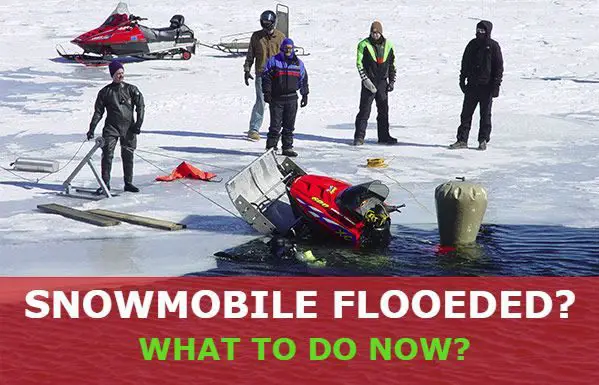What to do if you sink your snowmobile? Last time I talked about what to do before going on a snowmobile or ”sled” trip. Namely, what to bring, what to do, what you should not do. Now it is time to talk about what to do if you sink or flood your snowmobile.
Well, here you are, already riding the frozen wastes, adrenaline in your blood, engine roaring, wind cutting your cheeks. Life is good. Until you suddenly stop and suddenly your feet are a lot colder than normal and they are soaked as well. You pray it is just the snow caught by your boots that is melting in the sunlight.
You look down, but your snowmobile is now half covered in snow, mud, water, probably dead animals and other lovely elements of the surrounding countryside.
You try to rev up the engine, but all you get is the sound of an elephant blowing bubbles in a pond. It is official, you are stuck and your sled is now submerged.
You scratch your helmet and remember the words of wisdom passed on by the wise Panzer of the lake so many years ago:
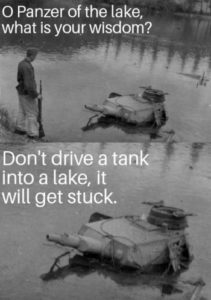
You then ask yourself:
So what should I do now?
Short answer
You can either pull it out of the muck, clean it up of water and mud (engine, exhaust, and every other important piece), dump the gas and oil, replace them with new ones and send it to a repair shop for proper maintenance. Or you can put it in a jar of rice overnight. Whatever floats your boat, but doesn’t sink it.
But I am not here to just give you a short answer, no. I am here to tell you what you should do, step by step, in order to reliably get out of the proverbial muck and return home in one piece before sunset. So clean up your goggles, get your gloves and snowmobile tools and pull up your sleeves, because you are about to get wet and dirty.
Note to our readers: the following information is drawn from the experience and suggestions of veterans who have already gone through this process and succeeded in salvaging their sunken snowmobiles, so rest assured that I am bringing you top quality advice from people who have experienced the dreaded pond first hand.
First step
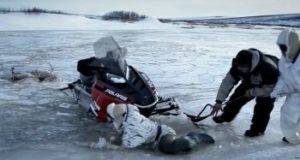 As mentioned before, it is imperative that before you start repairing it, you pull it out of the mud or water firsthand. In such circumstances, there are a few ways this can turn out:
As mentioned before, it is imperative that before you start repairing it, you pull it out of the mud or water firsthand. In such circumstances, there are a few ways this can turn out:
One instance is where you have taken our advice and brought as many friends with you as possible – The more, the merrier, right? – Well, then you are lucky because more friends mean more manpower. This is how many tackle this particular situation.
Use your car or tow cable
Regardless of how many you brought, however, it is natural to think that in order to bring your sled to the site, you used a car for transportation.
If so, this is great news, seeing as how you can now tow the sled out of the pond with your car. And fortunately, most cars have a towing cable at hand, so you should be good with this situation. Tie it up and slowly drag it out.
However, maybe your sled is now stranded in a mountainous or swampy area, where it would be silly to bring your car. No problem. As stated before, you got friends.
Tie it up, place the cable around a tree if it is long enough in order to maximize efficiency or keep it straight if it is too short and work as a team, slowly pulling it out.
Just make sure nobody gets hurt. There are specialized steel tripods with winches out there that make this job easier.
Precautions – don’t put yourself in danger!
If by any chance one or more of you are required to get in the cold water/mud to push it, make sure to take a few precautions:
- Get out of your original clothes. It might be cold, but not doing so might put you at risk of hypothermia. Furthermore, soaked clothes will drag you down and will freeze up really fast. After you are done, immediately make a fire or dry yourself up somehow and get your clothes back on.
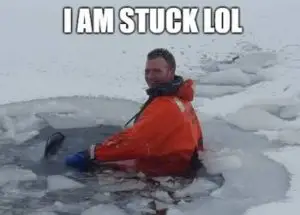
- Always make sure that whoever gets in the water/mud will always have something solid and dry to grip. Cold water shock has been the cause of many deaths in the past.[1]
- Furthermore, mud might cause slipping and the combination of cold, shock and slippery can cause many to lose control of their lungs and inhale mud, choking or damaging their organs in the process.
Are you alone?
If by any chance you went there alone, do not panic, because here is where our previous article comes into play.
If you’ve read it already, you know that I have placed a great deal of emphasis on informing the local police or mountaineering group of your intended routes or the general location you would like to explore.
Calling 112 (EU) or 911 (USA) does not require phone signal, is free of charge and, with your information available beforehand they can send a searching party for you as soon as possible. With their aid, you will get out of that pickle in no time.
But let us assume that by any chance you cannot contact them. In this case, prioritize yourself over your sled. It is not going anywhere.
Make sure you are not wounded and have the proper gear (med-kit, food, water and clothing) necessary for your return back to civilization.
After you are safe and sound, you can organize a search party with the proper means to retrieve your sunken sled. Do not try to pull a Scrooge McDuck! Your life is more valuable than any machinery.
But safety tips aside, let us talk about the technical stuff…
Affected parts
You managed to pull it out. Gratz, this was the hard part. And assuming you brought the tools necessary to repair your sled, along with additional fuel and some motor oil, this is what you ought to do:
First, check for the affected parts. Normally, a fully submerged machine will have all of its components drenched. Fortunately, although it is a slow process, the sled can be repaired then and there. 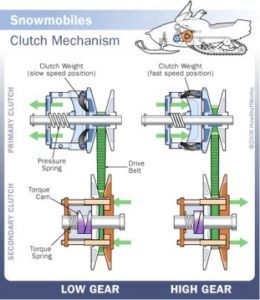
You should expect said parts to be affected:
- Engine
- Exhaust
- Gas tank
- Cylinders
- Air filters
- Clutch
- Carburetor
As expected, the problems will revolve around water and/or mud getting inside places where they shouldn’t be. In the case it is merely water, you shouldn’t be that scared, seeing as how you can just get it out of the parts the same way you would any other vehicle (A.T.V., motorbike).
However, if you are unfortunate enough to deal with mud, you should be ready to get yourself and a lot of towels or rags dirty. Mud, unlike water, is dense and stickier, requiring you to personally take apart every piece and clean it manually. And where there is winter, there are winter nights, and the sun doesn’t care for you when it has to set. Time is of the essence.
If you should find yourself in this particular situation and without proper gear and/or housing, leave it for today and return when possible in order to safeguard your wellbeing.
If, however, you can spare the time and effort, this is what you should do:
Steps to follow – how to dry the components, what to repair, etc.
Get the snowmobile out of the water as soon as possible, but don’t put yourself in danger, it doesn’t worth it!
According to many veterans, the saying goes ”The sooner you can get the sled fired up, the better”. And this is why: prolonged exposure to the elements will damage the components even more. And trying to start it before properly cleaning it properly will quickly transform it into a pile of shiny spare parts. But do not rush!
Your top priority is to extract the liquids inside and dry it. This applies especially to the oil compartment. Make sure the water did not mix with the gas and never crank it up without properly drying it, as it can severely and irreversibly damage the machine.
This should be an easy step, seeing as how it is easy to detect if there is water in the oil due to separation. If so, empty it, dry it up and replace it with a new one. Make sure not to pollute the nature around you (a spare plastic bottle will do).
Technical stuff ahead
Next is where the tools I told you about come into play. Pull out the spark plugs and try cranking the engine over to blow the water out of the cylinder without actually starting it up. Some light mechanical work might be necessary to remove and drain the components (get the soggy air filters out and dry them). If it is mud, you will have to take apart whatever you can with reliance, clean it, dry it up and put it back the way it was.
Try to get as much liquid out as possible before trying to turn the engine on again. Remember, water doesn’t compress, so if you try and run the engine while there is still water in the system, you are going to blow at least one cylinder.
Electrical system
There are some ups, however. Namely, the fact that the electrical systems are usually not affected by such inconveniences. This is because producers, knowing about how the sleds are going to be used, invest quality materials into insulating the electrical components. There might be exceptions to this rule, but all in all, you should be safe.
Unfortunately, from this point on, your day is over. Even if you managed to pull it off and get the engine started again, prolonged usage will cause enough damage as to incapacitate it in the long term. Here is where your only option is to get it to a specialized mechanic who can get it repaired nice and dandy.
It is worth repairing – what options do you have? Sell it, get a new one, repair it, etc.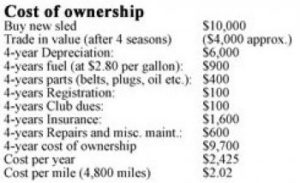
It all depends on the price you have paid and especially on whether you own an insurance for your vehicle. While repairing cheaper models, the price can exceed their worth so you can just dismember them into a pile of shiny scrap and sell them in order to minimize losses. If so, get another one and try to avoid repeating the process.
If the price of the vehicle is high enough as to bring you a steeper repair bill, it will ultimately be, however, much lower than investing into another sled altogether.
Which is why you should always consider owning an insurance in order to back you up. Yes, accidents might not be as consistent, but only one insured incident can earn you back all of the investments. And trust us, they do stack.
What to do if you sink your Dirt Bike
It is a given that dirt bikes do not run under water. As Motosport.com puts it ”A sunk dirt bike in water with the white sputtering smoke out the tail end is often the star of all those dirt bikes fail compilation videos”.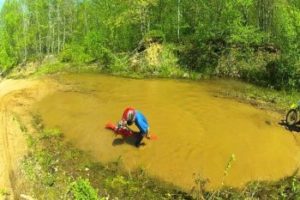
If you do manage to get yourself into such a pickle, do the following:
- Get is out of the water A.S.A.P!
- Tip the bike upwards to drain the water out through the exhaust pipe (from the engine, where water entered due to lack of resistance, unlike snowmobiles who have a button that can seal the chamber up). Just like a wheelie!
- Remove the spark plug and flip the bike upside down so it is resting on the seat and handlebars.
- Use your hand to push the kick starter several times which helps push water out of the motor.
- Try and rev it up (if you are lucky, you will notice).
Make sure to change the oil A.S.A.P. Like snowmobiles, the electric circuits are also sealed so no worries about them.
What to do if you sink your ATV or UTV
Just like the dirt bikes, A.T.V.s are surprisingly easy to clean, seeing as how you can just tilt them over and shake them like a Roomba in order to empty the liquids through the exhaust pipe. A few swipes of cloth here and there, and it should be good to go.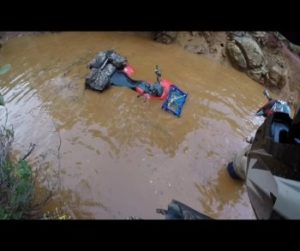
The same principle applies here: do not start the engine before properly cleaning the insides. Also, get an inspection afterward. Change the oil and the oil filter, the air filter, the coolant and replace the exhaust packing.
Unless you sunk it into the mud, that is. Then, the process is similar to cleaning snowmobiles but less harsh and less chilly.
Other relevant questions a snowmobile owner may ask if the snowmobile is flooded:
Should I get an insurance?
It is imperative that you do when you buy the machine. Regardless of whether I am talking about a snowmobile, dirt bike or an A.T.V, a fine piece of machinery will cost you an arm and a leg. And a liver. And while you are at it, why not make sure that in case of anything happening you can sleep peacefully knowing that your 5000$ to 10000$ beast is financially secured.
But isn’t it a bit too expensive?
All motorsports are and you know it. But you got into this because it is worth it and you love it, right? It is always worth it.
How expensive are the repairs?
It all depends on the quality of the components, just like with those of a car. This means that using cheaper, older parts for a newer model can damage it in the long run, even if they might fit in at first. Again, do not pull a Scrooge McDuck. You invested too much into it and its life is more valuable than saving a few hundred dollars.
I need specific information regarding my sled
It usually comes with the sled itself (in form of a manual or other such sources). Also, such information can be freely accessed through the internet or by inquiring the manufacturer.
How long is it before not drying it becomes harmful to the sled?
The sooner you pull it out and dry it, the better. Prolonged exposure will cause damage to the parts, but sometimes this might be unavoidable. Do your best to follow the steps above, but never do it at the expense of your own safety.
I am looking for spare parts, but I cannot afford the market prices
Official dealerships are not the end of the world and depending on the region and quantity of purchased spare parts, you might be able to negotiate with the seller. If not, try and fish for them on the internet. International deliveries are becoming more available and cheaper also.
Just make sure they are the ones you are looking for, so you should check snowmobile forums or manufacturer sites for any info. People there are always eager to help fellow enthusiasts and/or clients. They might also aid you in repairing it yourself if the task is not too demanding and reliant on specialized tools.
Conclusion
The snowmobile is like a fine lady. Take care of her and your life will be lived at its fullest. Don’t, and you are about to freeze to death in the middle of nowhere. You wouldn’t leave a fine damsel in distress to suffer from a little cold mud bath, would you? And what are a few hundred dollars before your happiness? Take great care of your machine and your machine will take care of you, in turn.
Resources:
https://adventure.howstuffworks.com/outdoor-activities/snow-sports/snowmobile1.htm
https://www.staebler.com/blogs/water-damage-the-bane-of-snowmobiles-and-atvs
http://www.amsnow.com/how-to-tech/beginner-tips/2010/03/snowmobile-economics
https://www.motosport.com/blog/help-i-submerged-my-dirt-bike-in-water
https://www.dootalk.com/forums/topic/366145-steps-after-sinking-snowmobile/
https://thumpertalk.com/forums/topic/395090-sunk-my-bike-need-some-help/
[1] https://aceboater.com/en/cold-water-shock-symptoms-treatment
